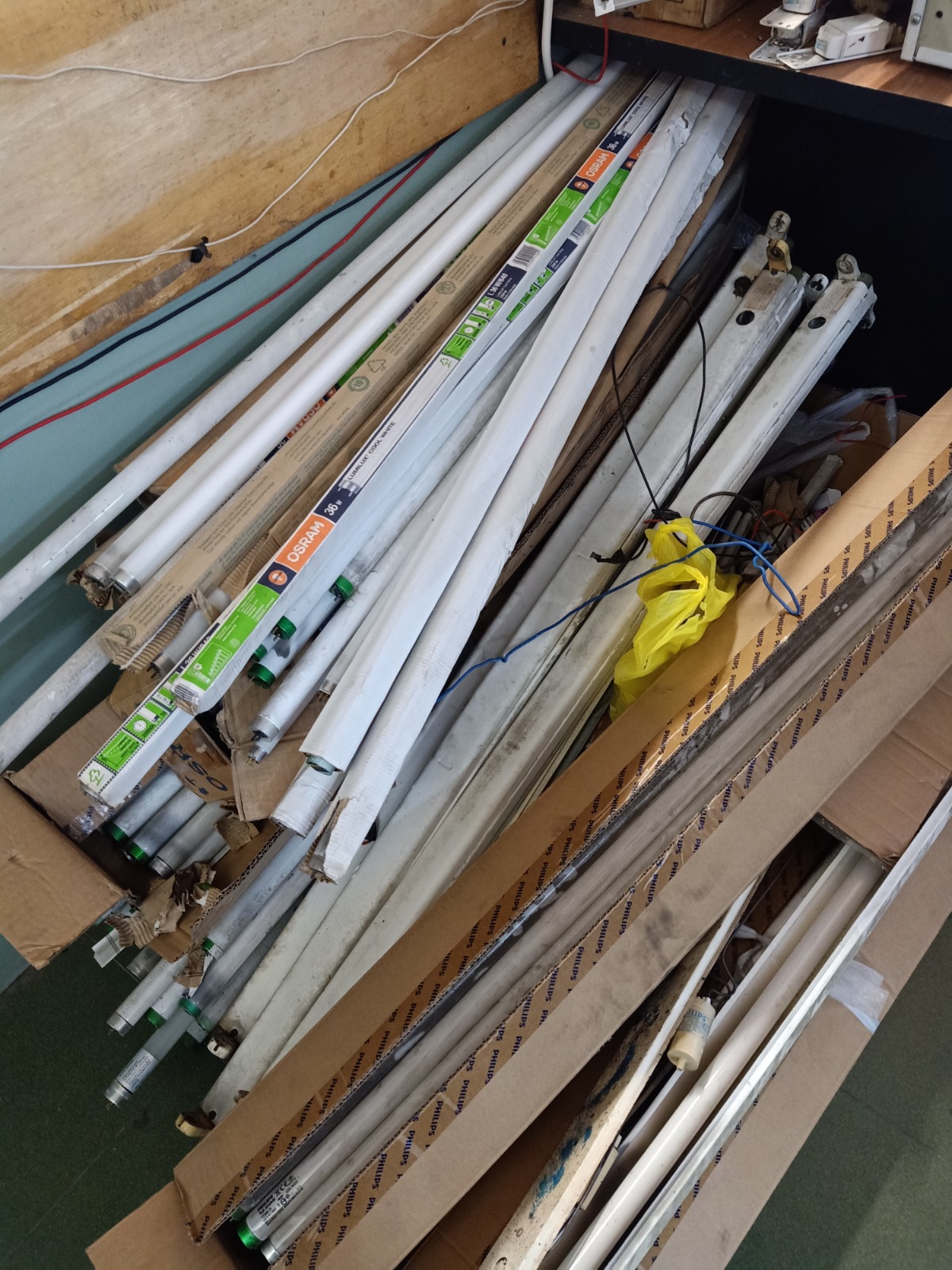LAMP WASTE:
TIME FOR INDUSTRY TO TAKE MORE RESPONSIBILITY

#INTERNATIONALPLASTICFREEDAY
Behind the lights that brighten our homes, offices, or factories, there lies an often overlooked environmental issue: lamp waste.
Used lamps—such as fluorescent, halogen, and even LED—not only contain plastic but also heavy metals and electronic components. If not handled properly, this waste can contaminate soil, water, and even impact human health. Unfortunately, most lamps still end up in regular trash bins.
💡 Lamp Waste & Eco-Friendly Solutions
According to the Global E-Waste Monitor 2024 (by the United Nations Institute for Training and Research - UNITAR):
- The world generated approximately 62 million tons of electronic waste (e-waste) in 2022.
- This number is projected to increase to 82 million tons by 2030 if no significant changes are made.
- Only about 22.3% of total e-waste is formally recycled.
Lamp waste (lighting equipment) is categorized under "Small Equipment" and specifically reported in its own subcategory. In 2022, lamp waste contributed approximately 1 million tons annually worldwide. This includes fluorescent lamps, CFLs (compact fluorescent lamps), and LEDs, which often contain:
- Plastic casings (not biodegradable),
- Heavy metals such as mercury (in CFLs and fluorescents),
- Electronic components that are difficult to recycle.
🌱 Innovations to Reduce Plastic Waste in the Lighting Industry
The global lighting industry is actively innovating to address these challenges, including:
- Modular design: Lamps are easier to dismantle and recycle.
- Eco-friendly materials: Casings made from recycled plastics or natural materials.
- Long-lasting LED technology: Lifespans of over 25,000 hours, reducing replacement frequency.
- Recycling programs: Manufacturers providing drop-off points for used lamps.
⚡ Our Commitment
In commemorating International Plastic Free Day, it’s time to recognize that lamps are not just sources of light—they are also part of the global plastic consumption chain. By choosing the right technology and supporting eco-friendly solutions, we can all contribute to a cleaner, brighter future.
In Indonesia, lamp waste management is still far from optimal. As players in the lighting industry, we have a responsibility to:
- Educate the market about the dangers of lamp waste.
- Offer longer-lasting, eco-friendly lighting products for a healthier planet through energy efficiency.
- Support recycling and responsible waste management programs, such as our “Sewa Terang” (Light-as-a-Service) initiative, where companies or institutions receive end-to-end support for lighting—from planning, procurement, and maintenance to disposal. This helps reduce, or even eliminate, improperly recycled lamp waste.
As a company in the lighting engineering sector, we believe that technology must go hand-in-hand with sustainability. We are committed to delivering lighting solutions that are efficient, safe, and low in waste—for a better environment.
“Because good lighting doesn’t just illuminate—it also helps preserve the Earth.”